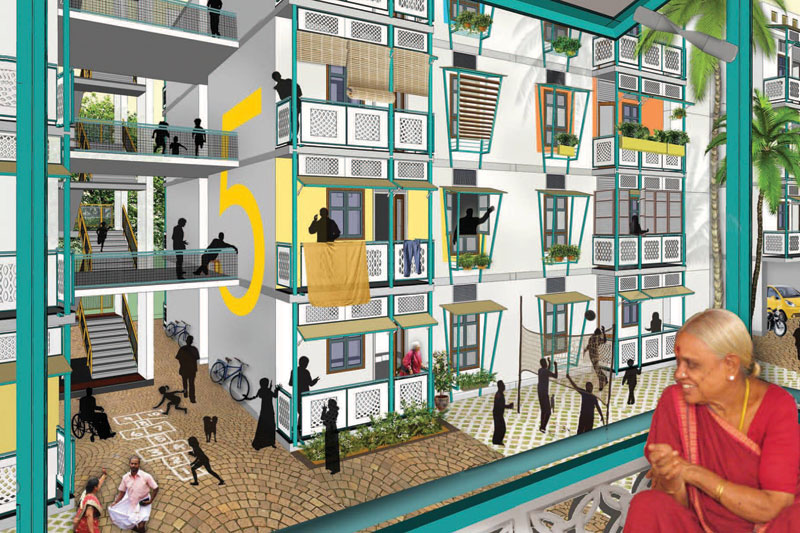Design
So That the Millions Can Dream | Geeta Wahi Dua
LA 43 |
|
| Development needs to be re-oriented to be more inclusive in that it provides for the low income families just as much as for the other economic strata. As design professionals, we might often shy away from the prospect of the limited budget low income housing projects, but on the other hand, the budgetary limitation is precisely what makes it more challenging and allows one to flex their creative muscles in trying to work with the current design vocabulary and modifying it so as to be able to create a solution with a low maintenance cost that does not, however, compromise on quality. |
|
 |
|
Housing for the urban poor in India has failed to keep up with the rapid urbanization after the economic boom that started in the 1990s. During the 1970s-80s, this sector was being mainly taken care by the Public Works Departments at the state level, and a few public undertaking institutions such as Housing and Urban Development Corporation (HUDCO).
A report by Monitor Deloitte (July, 2013), one of the global brand of Deloitte Touche Tohmatsu Limited, a private company in the UK that provides management consulting services to the State of the Low-Income Housing Market states that the low-income housing segment (corresponding to a monthly income of `7,500-25,000) is estimated at 220 lakh households with an estimated opportunity size of `1,100,000 Crore and is largely underserved.
This has led to low-income families living in cramped, sub-standard and often rented accommodations with limited access to civic amenities, giving rise to the many slum areas in our cities. With the urban areas becoming new economic engines, there is a huge inflow of migrants from neighbouring areas. The demand for affordable housing has sharply risen as a result in recent years.
|
|
|

|
|
|
|
|